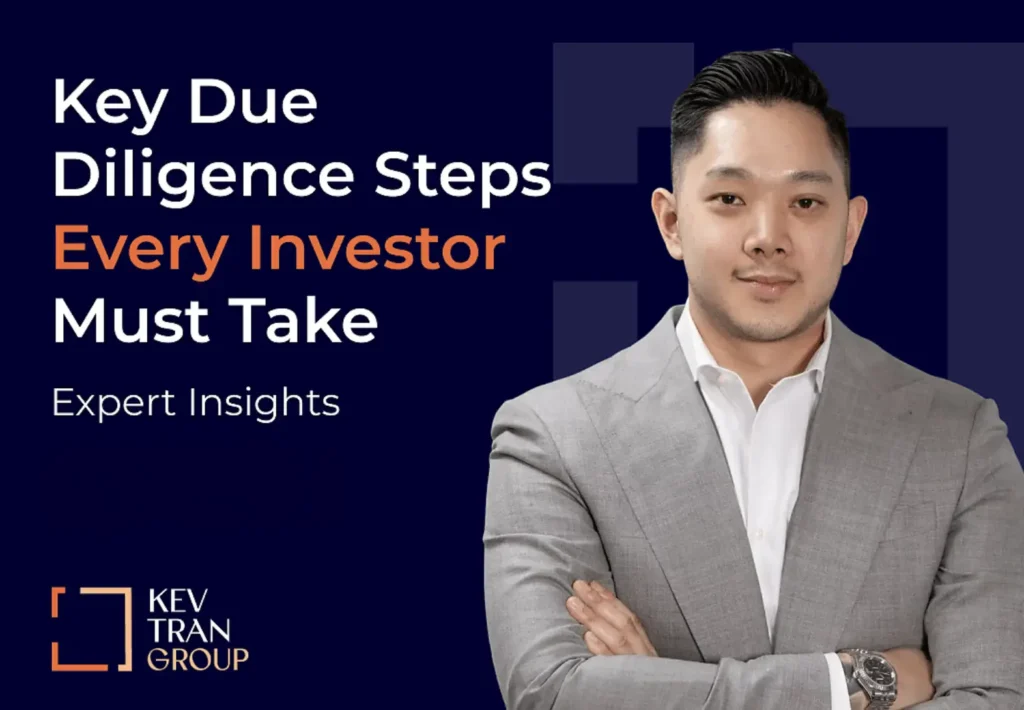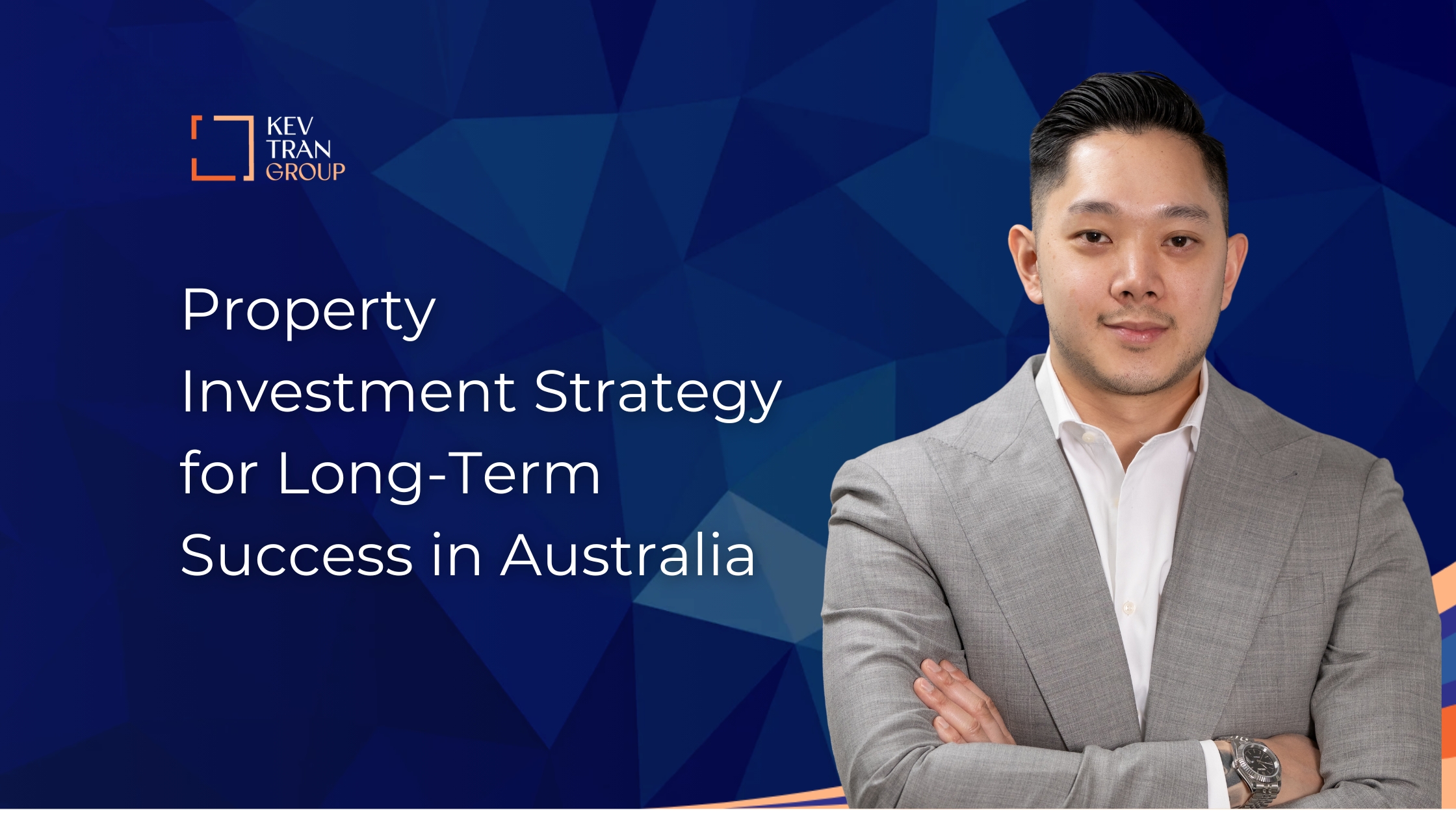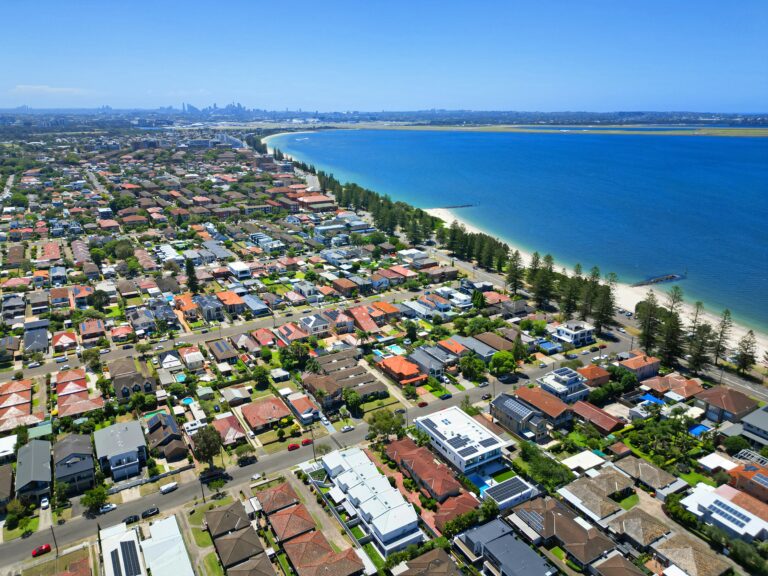Property Investment Strategy for Long-Term Success in Australia
90% of Australian investors never get past 1-2 properties. It’s rarely due to a lack of income; more often, it’s a lack of the right strategy.
That’s where strategy makes the difference, not just in what you buy, but in how each property fits into your bigger picture.
Kev Tran Group collaborates with professionals seeking to build a long-term portfolio through sustainable property investing that aligns with their lifestyle. Meaning, balancing capital growth with cash flow, stress-testing assets before buying, and investing in markets backed by real data.
We don’t just recommend properties, we invest in the same suburbs ourselves. Places like Townsville, Toowoomba, and some Victorian markets align with our Australian property market strategy and proven process.
If you’re serious about learning how to invest in property long-term and building wealth without making costly mistakes, the next step is simple.
Book a Clarity Call with Kev Tran Group to map your next move.
Why Most Investors Get Stuck After Property #1 or #2
In our experience, the biggest mistake is buying based on emotion or familiarity.
We see people from Sydney or Melbourne spending $700K – $800K on units in their own backyard, but the cashflow is poor, the growth potential is limited, and they quickly max out their borrowing.
There’s no clear property investment strategy, just a hope that the market will do the heavy lifting. That’s where things stall.
Take Darwin and Cynthia, clients of ours with three young kids. They came to me unsure of what to buy or where to begin. We mapped out their long-term goals, found two long-term property investment opportunities that balanced growth and yield, and made sure each asset supported their broader property portfolio planning in Australia.
One of those deals was in Toowoomba, a market we personally invest in too. That kind of alignment matters. Because at the end of the day, you don’t need ten properties to retire, you just need the right ones, and when you focus on quality over quantity, everything else becomes easier.
The Foundations of a Long-Term Strategy
Every great investment plan starts with a clear destination.
The mistake we see most often? Investors diving in without thinking about where they want to end up.
They buy based on emotion, hype, or someone else’s agenda, and before long, the portfolio is misaligned, negatively geared, or just stuck. That’s why we always bring it back to fundamentals:
Start With the End in Mind
When we speak with new clients, we ask one simple question,
“What are we really solving for here?”
It’s rarely about owning more properties. It’s about building sustainable passive income that creates choices, whether that’s working less, spending more time with family, or retiring earlier than expected.
So we plan backwards.
- What’s your desired income target?
- How much time do we have?
- What’s the safest, most effective way to get there?
That’s the heart of our property investment strategy. Build a portfolio that pays you, not one that drains you. We design it to withstand market cycles, interest rate changes, and lifestyle shifts, because wealth without resilience doesn’t last.
Align Your Portfolio With Your Goals
Once we’ve got the destination, the next step is engineering a plan to reach it.
That means looking at:
- Your target passive income
- Your risk appetite
- Your timeline
- Your buffer requirements (which we stress-test with every deal)
To connect these dots, we use my Portfolio Mapping Method, a tool that visualises your investment journey across the next 10 to 25 years. It shows exactly when and how each purchase should happen, what kind of property is required (growth vs yield), and how the next step fits into your bigger picture.
If an asset doesn’t serve a defined purpose, we don’t buy it.
That’s how Kev built his own portfolio and how we help clients do the same. Everything is measured. Every deal must support your long-term property investment goals. No exceptions.
What Makes a Good Long-Term Investment Property?
You can have the best intentions, the biggest borrowing capacity, and the right mindset, but if you keep buying the wrong assets, your property investment strategy will never get off the ground. Let’s break it down.
Growth Potential + Cashflow Balance
A mistake we see far too often is investors picking properties that look good on paper, but don’t hold up under pressure.
If you buy purely for growth in a market with a low yield, you risk being cashflow-negative and stuck. If you only chase yield in high-risk towns, you may never see real capital gains.
The sweet spot is balance. That’s where true long-term property investment wins.
Let’s say you’re comparing two markets:
- A Sydney apartment for $800K with a 3% rental yield and minimal growth left in the cycle
- A Rockhampton house for $550K with a 5% yield and strong upside over the next 3–5 years
Which one gives you more room to grow your property portfolio planning in Australia? Which one keeps your buffers intact and borrowing capacity strong? That’s why every deal we present has to pass both tests, can you afford to hold it now, and will it grow in value over time? That’s the foundation of sustainable property investing.

Due Diligence is Non-Negotiable
It’s not just about where you buy, it’s about what you’re buying.
Our due diligence process is how we protect your portfolio from unnecessary risk. We follow a clear checklist to eliminate hidden issues before they cost you down the track.
Here’s what we assess:
- Flood zone risk
- Overland flow paths
- Bushfire overlays
- Proximity to power lines or major roads
- Roundabouts and noisy intersections
- A high public housing concentration
- Nearby infrastructure that may impact resale value
These aren’t just theoretical risks. They affect your ability to refinance, resell, and even insure the property. If 7 out of 10 buyers wouldn’t touch it, you’ve just lost 70% of your resale demand.
We also run:
- Comparable sales analysis to verify the real market value
- Timing checks to ensure we’re not buying at the top of the cycle
And as markets evolve, so does our process. For example, we used to avoid small lots completely, but after seeing strong performance from 300 sqm sites in Adelaide, when supported by comparables, we’ve updated our criteria.
That’s the kind of flexibility and rigour that keeps your strategy sharp and your portfolio safe. Because if you’re serious about learning how to invest in property long-term, the details matter.
We were recently asked to contribute an article on “Key Due Diligence Steps Every Investor Must Take” on the Smart Property Investor blog. You can click the image below or click here to read it.
Where the Smart Money Is Going in 2025
In today’s market, buying the wrong property in the right suburb is still a mistake.
The difference between a winning property investment strategy and a mediocre one often comes down to timing, data, and knowing how to separate short-term hype from long-term value.
This year, we’re seeing real opportunities open up in select areas, but only if you know what to look for.
Underrated Markets with Upside
Let’s start with Victoria.
After lagging in growth over the past few years, it’s now positioned as one of the most compelling value plays in the country. Prices are still below peak, sentiment is flat, and that’s exactly the kind of setup we look for when investing ahead of the curve. In fact, Kev bought in Victoria himself.
Bunbury is another market we’re actively investing in. The infrastructure pipeline is strong, yields are healthy, and it’s a perfect fit for clients working with a $500K – $650K budget. You can still find solid standalone homes with strong rental demand and low vacancy rates, exactly the kind of asset that fits into a long-term property investment strategy.
Townsville, while often overlooked, continues to offer opportunities for the right buyer. But here’s the key, it’s not a “buy anywhere” market. We use deep filters around flood risk, yield thresholds, and public housing ratios to find areas with genuine upside.
The real edge? Smart entry timing, guided by data, not emotion.
If you want to know how to invest in property long-term, you can’t follow the crowd. You need to get in just before the market turns, not after it’s been pumped up by investor demand.
Markets to Approach With Caution
Mackay in QLD is a market with very strong supply and demand pressure. Very low supply, and strong demand is seeing many of its suburbs with upwards of 20% capital growth in the last 12 months. However its economy is at very high risk of dependency on one industry – mining. According to REMPLAN, 29.4% of the region’s total economic output is from mining, equating to roughly 12.8% of the employed population.
Townsville may be more diverse economically, but the risks exist if you don’t conduct thorough micro due diligence. We break it down by street, check flood overlays, assess public housing ratios, and track infrastructure spend at the LGA level, because that’s what it takes to build a safe, resilient portfolio.
That’s the reality of serious property portfolio planning. You don’t just need a good suburb, you need a good asset on the right street, backed by the right data. And if you get that right? You’re playing the game that most investors don’t even know exists.
Kev’s 3-Part Approach
If there’s one thing Kev learned from building his own portfolio and helping hundreds of others do the same, it’s this:
You don’t start with the property. You start with the plan.
Too many investors dive into the market chasing trends or tax deductions, that’s not a strategy, that’s a reaction.
The truth is, a great property investment strategy in Australia isn’t about chasing the next hotspot. It’s about making sure every property you buy plays a role in the bigger picture.
Here’s the three-part approach we use with every client at Kev Tran Group.
Step 1. Map your portfolio around your goals
Before we look at a single listing, we map out your long-term vision. We clarify your target income, define how many years you want to take to reach it, and establish the level of risk and buffer you’re comfortable with.
We run this through our Portfolio Mapping Method, the same process Kev used to build his own portfolio of four properties by age 33. It gives you a clear view of how to invest in property long-term with structure, confidence, and purpose.
This is property portfolio planning in Australia done right.
Step 2. Use real-time data and strict due diligence
Once your roadmap is clear, we find markets that align with your goals, and then we go deep.
We stress-test every deal through our due diligence checklist, reviewing:
- Flood overlays, overland flow, and bushfire zones
- Public housing ratios, rental demographics, and demand
- Comparable sales, timing in the market cycle
- Local infrastructure, road noise, and resale appeal
It’s how we’ve helped hundreds of clients make smarter, safer decisions.
Step 3. Buy in the same markets that Kev invest in
We don’t recommend anything we wouldn’t buy ourselves.
Markets like Toowoomba and Townsville are part of Kev’s personal portfolio because they meet our strict criteria for yield, growth, and long-term resilience. Clients appreciate that alignment, it builds trust, and over time, that trust compounds into results.
A Sustainable Portfolio Is a Planned One

If you’ve taken one thing from this, it’s this:
You don’t need ten properties to retire. You just need the right ones.
I’ve seen too many investors rush into the market, follow the noise, or chase tax benefits, only to end up stuck, stressed, and maxed out on borrowing.
That’s not how you build a portfolio that lasts. It’s not how we built ours.
A strong property investment strategy is built on planning, not pressure. It aligns with your life, your income goals, and your appetite for risk. It balances cash flow and capital growth, and most importantly, it gives you options later on.
We believe in fewer, better properties. Properties that are carefully chosen, strategically sequenced, and designed to deliver real long-term property investment outcomes.
So if you’re serious about how to invest in property long-term, and you want to avoid the guesswork, now’s the time to get a plan in place.👉 Visit https://kevtran.com.au to book your Clarity Call and start building your investment portfolio the right way.
–Kev Tran, Founder, Kev Tran Group







